Would like some input on landscaping ideas
Hello, well I thought this would be easy... but I can not figure out what to do with this front yard...
The 2 level flower bed under window is about 14 ft x 6 ft.
The large bush is inside the raised wood box that is about 13ft x 8ft (that has now been trimmed down)
The width of yard from neighbors driveway to mine is 27 ft.
Distance is 6 ft from sidewalk to box that bushes are in.
I have already started removing the rocks from the 3ft wide strip along the driveway.
My plan was to remove the wood from the flower beds under front window and replace with dry stacked stone wall, and add plants (I have no idea what kind yet) sod the yard, put up a picket fence (more of as a barrier), with a small strip of rock that extends on both sides of fence, stepping stones next to driveway, tree ring, remove the juniper bushes and replace with lilac trees or...
I am thinking if I do the picket fence (if I can decide on which style I like) I do not need to do the dry stacked stone right now (because budget) as the fence will sort of block the view anyway, but I would refresh and add flowers and plants... and maybe just seed instead of sod...
Or no fence but 8-10 inch size stones as a border edge... and in the corner edge where the yard meets the driveway, a larger boulder and some sort of decorative planting...
The decisions!! I am so overwhelmed... I just want it to look pretty... sod or seed... fence or no fence... dry stacked stone or leave it, remove the bushes or leave them...
Help me please....and thank you lol

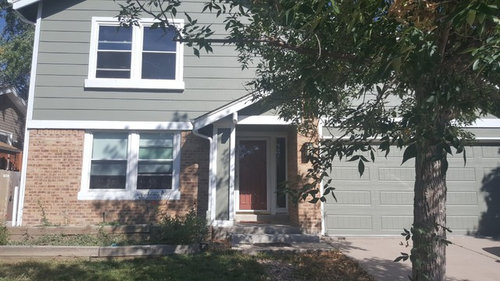

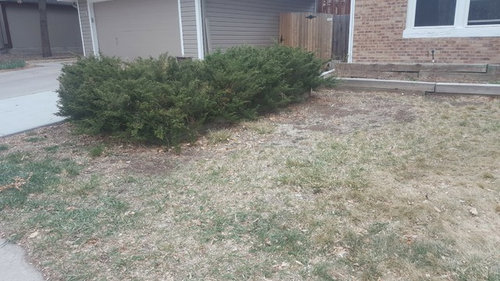
Comments (66)
partim
7 years agoCreeping Phlox. It also comes in mauve, and a purple-pink.
Vigorous, spreading ground cover for edges and border fronts.
Phlox subulata also known as Creeping
phlox, is one of the most recognized herbaceous perennial plants. This
vigorous, spreading and sun-loving perennial plant can grow only 6” high
but spreads to 24” wide. It is native to dry, rocky places and open
woodlands of the Appalachian mountains. Plants will tolerate deer,
drought and hot exposure, and erosion but good drainage is essential,
and watch out for rabbits. Flowers will open in April-May on top of
foliage mats with similar look to moss, where it gets its common name -
moss phlox. After flowering we recommend to cut back slightly the
vegetation to promote denser mat-forming. As a ground cover Moss phlox
is most used in sunny areas along rock walls, edgings, rock gardens and
slopes.paula thanked partimhandmethathammer
7 years agoWhat zone are you in? Whatever you plant, be sure it is appropriate for the place in your garden (sun and shade needs, dry vs. wet) and for your zone.
paula thanked handmethathammerRelated Professionals
Hockessin Architects & Building Designers · Spring Valley Architects & Building Designers · Buffalo Kitchen & Bathroom Designers · United States Kitchen & Bathroom Designers · South Sioux City Kitchen & Bathroom Designers · San Francisco Furniture & Accessories · Adelanto Furniture & Accessories · Miami Beach Furniture & Accessories · Temple Terrace Furniture & Accessories · Cumberland General Contractors · Lincoln General Contractors · Oneida General Contractors · Selma General Contractors · Watertown General Contractors · Waterville General ContractorsJ Williams
7 years agoThat looks like moss phlox. Your soil may be pretty bad judging by the sparseness of everything, or you don't have a good source of outside water? If either of those things are issues, they should be #1 in getting a nicer garden going. You already have 3 colours to start off with, grey green, orangey terracotta and white. I'd try to include them in your planting plan.
Orange/Terracotta plants:
Tiger Eye Sumach
Roses
Daylillies
Amber coloured ninebark
Tulips
Milkweed
Kerria
Trumpet vine
Marigolds, Nasturtiums, Calendua
Yarrow
Amaranth
Peony
Poppy
Grey Green Plants:Spruce, Pine, Juniper
Sages
Lamb's Ears
Baby's Breath
Artimesia
Alliums
Sedum
Grasses
Willow
Pearly Everlasting
Snowberry
Lavender
White Plants:Coneflower
Rose
Potentilla
Phlox
Anemone
Narcissus
Variegated Dogwood
Viburnum
Iris
Yarrow
Phlox
Balloon Flower
Campanula
Cosmos
Daisies
Purple as mentioned would be a natural partner, or burgundy. Perennial Geranium, purple smoke bush, lilac, purple nine bark etc.paula thanked J WilliamsJ Williams
7 years agoOh, I was going to recommend planting the prickliest plants at the front, and sometimes rocks at the front are a barrier that they will pee on instead of your plants.
kathleen MK
7 years agolooks like white phlox sublata (sp?) the last word meaning it is a spreading ground cover. does it have almost needle like leaves. love my purple phox which handles neglect.paula thanked kathleen MKpaula
Original Author7 years agoI am zone 5... that area is west facing, full sun. There are some sort of drip lines attached to the sprinkler system, but the front yard got so bad I hadnt really wanted to waste water on it. The soil is clay I think... as the water just runs off. The sprinklers do work and I will have the landscaper fix any sprinkler issues. I really want to start gardening but then that's just it, I don't know where to start...paula
Original Author7 years agoI don't think the leaves are needle like though on the white flowers...
I am pretty sure what happened to the grass was the neighbors enormous pine tree plus I was neglecting yard work ... They have since cut that tree down. Thankfully... It was a lot of pine needles to pick up.J Williams
7 years agoYou start with the soil and watering issues, then you begin with the biggest items 1st. You will not have a garden without decent soil or watering. Even if it's just a hose hooked up to a sprinkler. Begin the plan with the foundational plants, the biggest things that define or anchor a space. What is top priority? A path to the door? A tree for shade? Privacy from neighbours? If you are the sort of person who never waters/does no gardening pick the toughest most drought tolerant plants for your design that need the least upkeep. Grasses come to mind, Autum Joy Sedum, or those landscape roses. Lilacs are pretty self sufficient as are iris and dayliliy. Even drought tolerant plants need to be watered in their first year, then as needed in the years to come. Mulch mulch mulch. I know some people hate mulch but it's great for front yards that don't receive a lot of upkeep. The number one rule for low maintenance gardening is Right Plant Right Place.
paula thanked J Williamspaula
Original Author7 years agoMy top priority is making the yard look nice. I want my house to be the one that people say "wow that is a nice yard!" It doesn't have to be elaborate, just basic green. lush grass, and some pretty, fragrant flowers. I would like some winter interest as well. But mainly flowers and lushness...
I am leaving the soil to the landscaping company I hire. They will do the sod, plant bed in front of the windows and I am possibly going to pull out those juniper bushes... I just cant decide what to put in there...
We do have some watering restrictions in my city so drought tolerant is best. But I want pretty grass!!!
J Williams
7 years agolast modified: 7 years agoYou could do a curved bed incorporating the junipers to include the front of the house, the rest lawn, with a low fence as mentioned to keep dogs out. It would be nice to put something tall and skinny by the window or put a trellis on the wall. Pencil thin junipers, degroots spire cedars. Maybe a clump of deciduous shrubs right by the walkway (sidewalk), lilac, viburnum. Then low plants along the front, maybe sedum, ornamental grasses, some coneflower. You've got a downspout right there, what about a rain barrel?
partim
7 years agoDon't keep the junipers. You tell us they have been trimmed even further since the picture above was taken, and that they have brown spots. That means they have been trimmed past the point where they will grow out. Junipers won't recover from that.
paula
Original Author7 years agoOh my goodness! See there are so many choices! J Williams, do you mean a curved bed under the window?
J Williams
7 years agolast modified: 7 years agoIf you want to retain the lawn, and make the lawn a feature, the beds will have to be simple and small. I'm talking about an L shaped bed on the left.
That being said, with extreme dry conditions, I personally, would dispense with a lawn as they do naturally go through a brown phase in summer.paula
Original Author7 years agoOh partim I did not know that. So you just have to let them grow and look like a crazy mess? They are inside of an 8 x 13 ft raised bed (?) They were so overgrown you could not see the boxes around them...
Here is an older picture... Those juniper bushes on the right have been removed... to the left between the box of junipers and window flower bed is a narrow path to the gate to the backyard. So the box under the windows I am not sure what to do with... My initial plan was to remove them and replace with some sort of stone/rock wall/border and keeping the 2 levels. but seeing the cost of stone, I had changed my mind to just one level... But even at that, its pricey... So maybe just remove that altogether and have a simple bed?
I kind of want to keep the 8x13 ft bed on the left as it is a divider from my yard to the neighbors... I don't really like the look of the wood but I am not sure what to replace it with as the cost of the stone/rock I like is a lot..
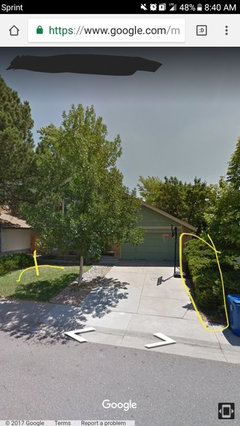
partim
7 years agoAs far as the junipers, the beauty of them is the pointed arching shape of the branches. So yes, you don't clip the branches. You choose the plants so that, at maturity, they aren't too big. If you have a 6 ft wide bed that's 13 feet long, and you want junipers, you choose a variety that's 6 feet or less in width, wide at maturity, and plant 2 junipers, with the planting hole (center of plant) about 3 feet from each long end, and 6 feet apart. In the early years it will look bare, and you'll plant annuals or ground cover around the edges and in between to fill it in. But in time you will have beautifully shaped shrubs that never need pruning.

partim
7 years agoIt's a matter of taste, but I like the look of a bit of lawn in a suburban front yard. In this plan, the standard size lilac hedge and the walkway are about 5 feet wide, the dwarf lilac hedge about 3-4 feet, and the oval of grass about 15 feet wide and 10 feet deep. In front of the house, you have about 5 feet of evergreen hedge (including the space between the hedge and the house), and another 5 feet of annual or perennial flowers.
You can probably plant the lilacs in the wooden box where you now have the junipers. I wouldn't do a stone wall, just remove the other wood pieces and grade the soil evenly from the house to the sidewalk. If you like stone, use it on the pathway.
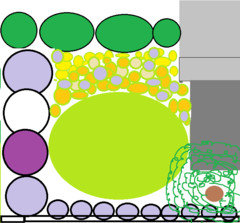
paula
Original Author7 years agoWow thank you so much for your time partim! Can I ask how you do this drawing? Is it an app? Some website?
J Williams
7 years agoLawns look nice if they are watered and fed regularly, but if they never get watered they will turn brown over the summer.
How did you trim the junipers? They can't be sheared back, you need to reach in and cut back from the inside of the shrub. Some brown is usually normal, evergreens have dieback and regrowth just like any other plant. But they can look horrible if they've been treated poorly.
partim
7 years agoI just use the Microsoft Paint since it was already on my computer.
When I did my own landscape plan, years ago, I used graph paper at 1/4 inch = 1 foot and did a scale drawing of my lot, and added the things (like your tree) that are staying. I had to tape a few sheets together, or you can ask at someplace like Home Depot that has a kitchen design department, and they won't mind giving you a few sheets. I taped it to a piece of corrugated cardboard so I could stick pins in it.
I drew out the shapes of the beds first, making sure not to make anything too narrow. Then I looked up the plants I thought I'd like, and cut out little circles of their mature size, and started to move them around. For example, if your lilac bushes will grow to 4 feet wide, you'd make some one inch circles labelled "lilacs" and see how many you can fit in. Or 3 foot lilacs would be 3/4 inch. You can overlap a bit, but don't squash things in.
Personally, I like strong lines in a landscaping plan. This is my front yard and you can see the definite curves.
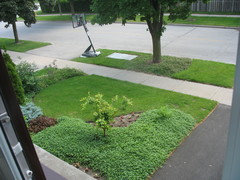
paula thanked partimJ Williams
7 years agolast modified: 7 years agoOne easy trick is to use a garden hose to lay out the beds, the weight of the hose forces more gentle, sweeping curves. Use a strait shovel or edger to cut out the shape. Agree that the bed should contain the plant material, you don't want to be mowing under shrubs, it looks messy and is a PIA. Also, if you have some big sticks, stakes, stick them in the ground at the centre of where you are putting something big.
paula
Original Author7 years agoPartim that is lovely! And lush!!! What are those plants in your yard?
partim
7 years agoI have found that the garden hose method does not produce distinct enough curves for my taste. I prefer to draw the beds out on graph paper using pins and string, then transfer that to the garden using stakes and twine, putting little pebbles as you draw the circle. Then use a spade or edger to make the edge. http://www.robertdickau.com/oval.html
For this front yard, an oval of grass in the middle would look very good.
paula
Original Author7 years agoWell J Williams, if I spend that much money on new sod I am definitely watering as much as I can so that I do not kill my grass again lol
I did not do the actual trimming of the junipers. My ex did it for me... I dont think neither of us know much about gardening... The bush is all brown in the middle if you look at it from above.
partim
7 years agolast modified: 7 years agoStarting from the driveway,
- a large bed of vinca. This is a evergreen ground cover, blooms blue in spring. It's invasive in some areas so may not be suitable for your area
- the small shrub at the bottom of the vinca is a yellow barked dogwood
- the tree is a sango kaku Japanese maple
- the burgundy patch is some kind of coral bells. The flowers are inconspicuous but the leaf color is nice
- a dwarf blue spruce is next
- Judii Viburnum - very fragrant
- ending the bed with cutleaf stephanandra
Under the maple I had ajuga, but it got all moldy so I replaced it with Creeping Jenny "goldilocks"
The picture was taken in late spring so you see annuals in the beds too. One annual bed has been replaced with lamium.
My yard faces east and is very very shady from several huge blue spruce on the opposite side of the driveway. It's also quite sloped so the rain runs off and it's very dry. You have much more selection in plants since you have full sun and don't have water run-off issues. But you see the principle of planting beds filled with shrubs, under planted where appropriate with ground cover, leaving space for annuals to provide good summer color. It's very little work since there's no place for weeds to sprout.
paula thanked partimpaula
Original Author7 years ago"cant tell a root from a branch" haha that'd be me... I appreciate your experience and advice J Williams!! I need all the help I can get... I have had to make a gardening notebook because there is sooooo much to know and remember! Its like being in school! I really do want to start gardening... My grandparents always had a garden with veggies mostly, some fruit and just tulips and a lilac tree were the only flowers. They gardened mostly because that is how people survived, growing food to eat. I will start on that next year in my backyard. For now I want to get my front yard in shape and in the meantime learn as much as I can for my vegetable garden next year!
katinparadise
7 years agoYou're getting tons of good advice. One ground cover that shouldn't be overlooked is Lily of the Valley. The little white flowers are so pretty!
paula thanked katinparadisepartim
7 years agolast modified: 7 years agoThat's probably why you like lilacs - they remind you of your grandparents! Definitely make room for some in your gardening plans. They are beautiful plants.
I think you're on the right track. There isn't only one right way or best way to landscape a front yard. ( J Williams and I are both experienced gardeners. He likes the hose method, I prefer a paper plan.)
A lot of it depends on personal taste. Look around and see what yards you like, and try to figure out why you like them. But with gardening, sometimes you do have limitations such as shade or slopes, that limit what you can do. You are fortunate to have a flat yard in full sun, so most things will do well for you.
My one advice would be to check how big your plants will be at maturity, and plan accordingly. Most plants look better unpruned in their natural shapes, and there are a lot of unattractively pruned shrubs and trees around. It's not easy to do well, and some bad cuts can't be undone. It's also a lot less expensive than buying too many plants, crowding them in, then having to remove or prune them in a few years because they look squashed. Better to plant them at the right distance and buy some annuals to fill in between for the first few years.
paula thanked partimpaula
Original Author7 years agoYes it is exactly why I love lilacs... reminds me of the carefree days of being young and playing outside, being with my grandparents as they were my "daycare" ... I love raspberries, strawberries, cucumbers, tomatoes, peaches... as well for the same nostalgic reasons...My other grandma had an entire yard of peach and plum trees and all kinds of fruit and veggies and raspberry bushes lining the fence all the way around...
Oh my goodness, I had not thought of lily of the valley! And that is one of my favorites! It is the flower for my daughters birth month! I will definitely have to plant those!!
I really do appreciate all the great advice on here!!
kathleen MK
7 years agoyes take down the top row of wood fast because it looks like it is keeping dirt and mulch above your brick line. That caused a floor in neighbor 's house in just a heavy rain. Keep soil and mulch a few inches below brick. Also keeping shrubs and plants a foot back will give you space for painting, window washing and other chores. put all that rock from the driveway edge and put it around the foundation for drainage and termite barrier.
Stacking paver stones would be much nicer and not rot like wood. Also they could be laid in a nice gentle curve. just use a garden hose to lay it out and measure. Be sure to dig trench to set first row buried halfway for sturdiness and the keep out grass. I would not stack above your first step.
With a small yard you want to keep it visually open so I would not replace juniper with tall lilacs but put one at th e corner of the house to frame the flower bed and maybe hide hose reel or trash bin. Those scratch junipers make a dog deterent so maybe some low growing ( blue rug?) juniper in front of a very low fence along the sidewalk would help with the dog owner problem. It is so Bad in our neighborhood that the city post signs they ignore and neighbors have electronic device to drive off animals. Roses on a picket fence could offer fragrant beauty and thorny protection.
You need a few evergreen shrubs especially if you removed the juniper. Make sure they are low growing so you won't be hacking them back from the windows all the time. Find hardy perennials like Irises for Spring And mums for Fall and bulbs that return every year so you only need a few annual color plants to replace yearly. You can get free divisions from local gardeners if you talk to them. I bring lots of my irises, herbs and ground covers to work to pass along. Seeds and annuals can fill in until the shrubs and perennials matutre. As for grass, sod is worth the extra cost. We seeded the back half of our bare yard after sodding the front.The back always had more problems with weeds, bugs and bare spots. Good luck with all the work , it will look great.paula thanked kathleen MKJ Williams
7 years agoI will recommend again, looking at a rain barrel partly for the reasons the other poster mentioned, controlling water around the foundation of your home.
paula thanked J Williamspaula
Original Author7 years agoJ Williams yes, actually I think our city just approved the use of rain barrels recently. I had looked into it a few years back and found out they were not legal. I thought that was just crazy...
Kathleen, so where exactly is the brickline? Is it where the foundation and siding or brick meet? I am looking at my 3rd picture and the neighbors house actually shows that area best. Is that what you mean by brickline? I never knew that there were rules about that! Thank you!
My son and I just finished getting out the last of the rock from the area next to the driveway last night. Stacked stones was my first idea but after finding out how much it could cost... Thank you for all the ideas!!!!
Johanna
7 years agoDepending on where you live, lily of the valley (though so lovely) can be extremely invasive and impossible to eradicate. I have seen entire flower beds overrun with it (zone 5) and taking over the grass. If you really love it, plant it in an enclosed collar that goes down at least 18 inches.paula thanked Johannapaula
Original Author7 years agoThanks Johanna! What is an enclosed collar and where would I find that? At a gardening center? Sorry I am very new to gardening still. I do not know all the lingo and products lol
J Williams
7 years agoShe's saying surround it with a barrier. Vinca, lily of the valley can be very aggressive and hard to maintain (and vinca grows over and on top of anything it's path). The other issue with lily of the valley is that is suits a cool shady area best as it yellows in too much sun/heat and looks like an ugly mess all winter. It is best contained in a constricted bed or put into a shady area where other plants struggle and not by a natural ravine.
partim
7 years agolast modified: 7 years agoI use a lot of ground covers, particularly in difficult areas such as deep shade and/or sloping ground. There aren't a lot of things that grow well in this type of dry shady environment and I need something very vigorous.
But Johanna and J Williams are correct that you need to be careful about ground covers that become invasive. They can be a lot of work to contain, especially in a lovely spot like yours with sun and adequate moisture. I haven't used an enclosed collar, but I know some people put their badly-behaved favorites in a big pot and sink it in the ground, to prevent spreading. Same idea. Mint is another plant that can take over your entire yard while you're having a cup of coffee.
Johanna
7 years agoIt doesn't have to be anything fancy, take a tall pail and cut off the bottom and remove the handle. These can be bought at any hardware store. Or use an old rain barrel. My neighbour used an old plastic baby bath ( put some small drainage holes in the bottom ) and sunk it in the ground.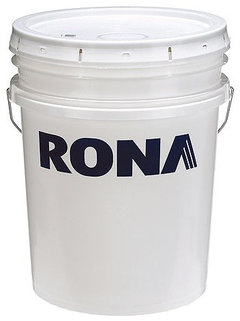
partim
7 years agoYou might find this article interesting/amusing. He gives a very good idea of just how difficult some of these plants are to control. http://davesgarden.com/guides/articles/view/523/ He's right that the problem is that they get in among the roots of other plants and then it's murder to try to separate them. Literally murder because you can kill the other plant when you dig around in its roots.
Be aware of this when people offer you sections of plants from their gardens. Not that you shouldn't ever accept, but these may be plants, like lily of the valley, that are crazy spreaders. And that's why there's often lots to share.
paula thanked partimpaula
Original Author7 years agoThanks partim, that was an informative article... I have always wondered about weed control...
I have 2 8x4 raised garden beds in my backyard. They were put there by the previous owners. I bought the house in 2008 and have not yet planted any veggies in there yet. But I was curious as to how to remove the weeds that grow in there. I have never put any kind of chemicals as I plan on eating the veggies I grow. I just pull the weeds out by hand. So would it be bad to use chemicals to kill the weeds and then a year later use it as an edible garden? I will still need to add a lot of soil to it... a truckload actually. That is why my veggie garden is waiting till next year and not happening now.
And what about the garden in my front yard. I have so many weeds growing in there. If I use something to kill the weeds now, will the soil be acceptable to ever grow anything in at a later time?
partim
7 years agoI don't use chemical weed control. It's not permitted in my city now (Toronto) unless it's done by a certified professional and it's really a serious case. But I've never felt comfortable with it. And even if you use chemical weed killer, that only kills the weeds that are there. Unless you plant something else, the weed seeds will start sprouting the next day.
I just dig them out of my planted beds and lawn by hand, using a very sturdy-bladed knife (I prefer this one) or a weed spike (my husband's preference.) For larger uncultivated areas like your back beds or your front where the soil is bare, use a hoe to cultivate it. Every gardener has their favorite style but I like a 3-tined one like the bottom one in this picture. But once you have a fully planted site, there are far fewer weeds.

Any bare soil you have will grow weeds like crazy. It's actually less work to cover it with some kind of plant that will choke out the weeds. In your back yard, you'd probably be surprised at what you can grow in those 8X4 beds without adding any soil, if you have sun and moisture. If it were me, I'd plant 4 tomato plants in each one and just let them spread over the soil. The plants will choke out the weeds and be much less work than trying to keep it weeded. You won't get weeds sprouting under a big tomato plant. Or a zucchini, another plant with big leaves that will prevent the weeds from sprouting. Obviously adding nice soil will give you a better crop of veggies, but it's not mandatory for this year and you'll get big weed-choking plants without it.paula thanked partimJohanna
7 years agoI learned the hard way that neighbourhood plant sales are often made up of plants growing out of control (description:a great spreader or vigorous ground cover) in someone else's garden. Buyer beware!paula thanked JohannaJ Williams
7 years agoThere are different ways of tackling weeds. One is to completely overhaul a bed, digging everything out and trying to track down every last scrap of root (goutweed, daylily, lily of the valley, perennial grasses, knotweed, bindweed), another is to cut off at or nearly at ground level (hoe method), and cut frequently to exhaust a plant or stop it from seeding (you can do that with scissors too, this is good for weeds that are so endemic you are never getting rid of them or weeds that are biennial), another is the smother method, completely engulfing the weeds and excluding daylight, promoting rot (not effective on goutweed, bindweed, campanula which just send their roots deeper). A very weedy lawn is a sign that the soil is poor/acidic, the grass cannot outcompete the weeds. Improving gardening conditions and mulching cut weeds way down, also planting densely. For veggies I personally would clear out the weeds as effectively as possible and straw mulch can help. You have time, you could try to smother/tarp off the areas for veggie beds.
J Williams
7 years agoI haven't always found that to be true about neighbour swaps, some plants just spread out readily and sometimes that is a good thing. The garden centres STILL sell goutweed here. Might as well buy dandelions too while you are at it. You should always research anything you plant.
paula thanked J Williamspaula
Original Author7 years agoHaha well I had to google goutweed. There is a "goutweed soup" people eat...
I am researching, and have a notebook now as there is just too much to remember about all these plants, shrubs, trees, flowers, grasses and soils... wow.
Partim, is there any other veggies with broad leaves that will choke out the weeds that I can plant with the tomatoes? I may give that a shot for this year. I will probably have to amend the soil a bit but that is probably doable for me right now.
Yellowstone Architects
7 years agoWhat a great yard to start with! I bet you will have something beautiful in the end. We always like to employ a little xeriscaping in our yards-
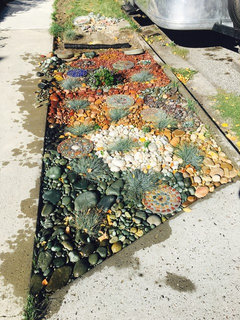
Using Native, low water plants and colorful rocks can be beautiful, clean and easy to maintain! I also saw someone mention rain barrels, that can be handy too.partim
7 years agoThe winter squashes (e.g. acorn squash, butternut) are also very spreading with large leaves. Most vegetable plants are more upright.
Another approach for a low-weed veggie garden is just to plant everything closer together. Each individual plant will be smaller, but overall you'll get a good yield. "Square foot" gardens are one type of close-together planting.
Carrots are fussy about their soil, and I've never had much luck with bell peppers. Beans are easy.
Two of my personal favorites for easy-grow are lacinato kale (also called dinosaur, Tuscan or black kale). More tender than other kale, and more expensive at the store. My neighbor plants it between her annual flowers. Another very easy one is rainbow swiss chard. Beautiful plants with brightly colored stems and no pests or diseases.
You mentioned that you have a child. They always enjoy picking things from a vegetable garden. What child wouldn't eat dinosaur kale?
paula
Original Author7 years agoWell the son that helped me with the rocks is 19. But I have a 7 yo too. Haha I don't know about him eating it but he would love the name- Dinosaur kale! Getting him to eat anything but mac and cheese is tough lol!! He is 7 and oh so darn picky! And my 19 yo is just as picky...
So flowers and veggies can be planted together? I never realized that.
So would melons be helpful to keep weeds down?
partim
7 years agolast modified: 7 years agoMelons are good too. Leafy and spreading. My children would eat anything that they picked from the garden.
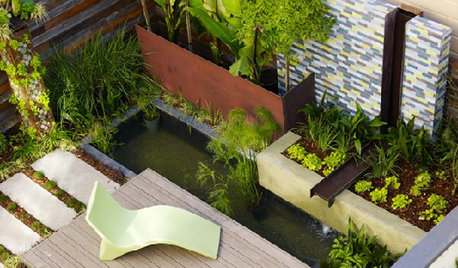

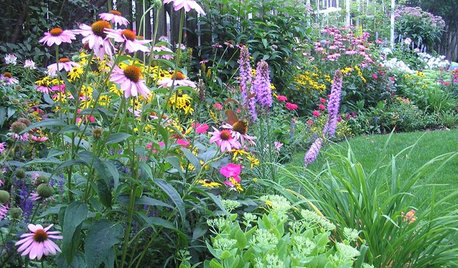
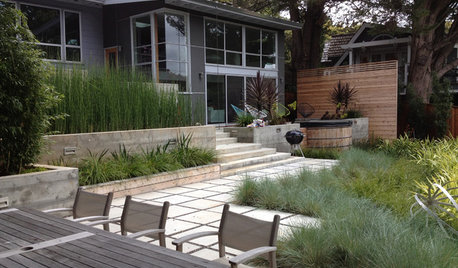

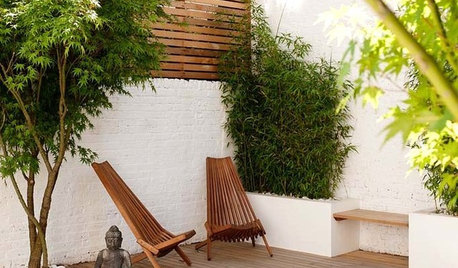
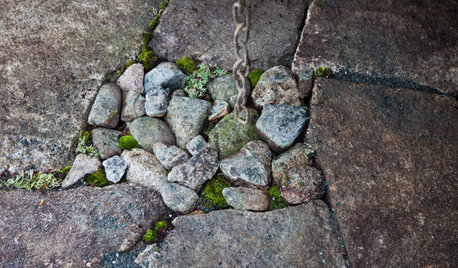

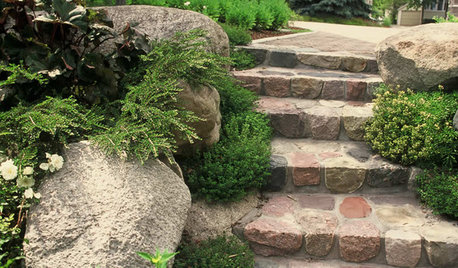









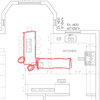

J Williams